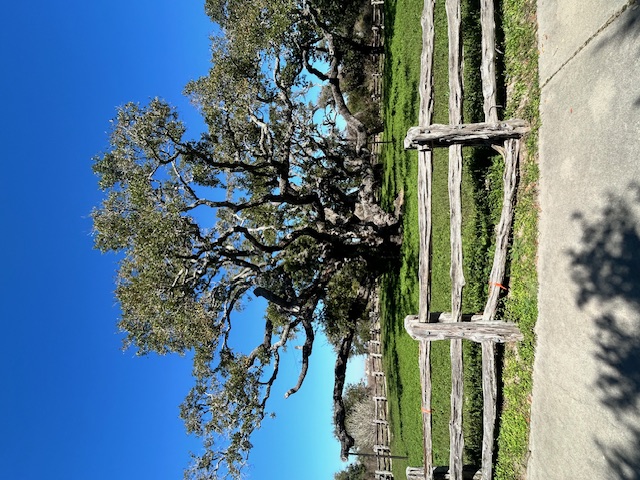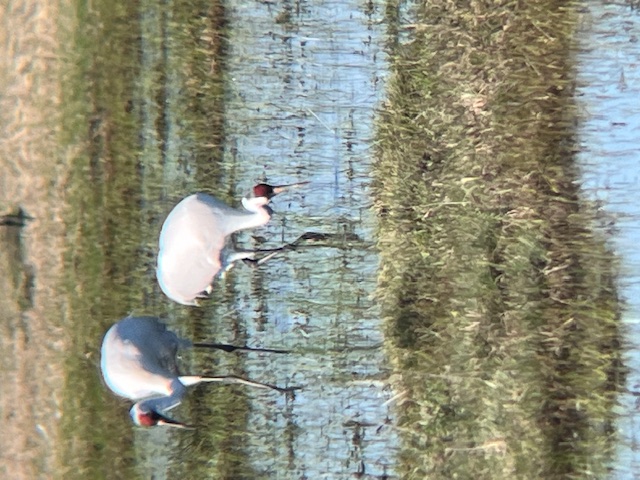It's time for the annual Whooping Crane Festival!
There are many opportunities to take boat and walking tours plus see exhibits here in Port Aransas, however, Carl & I decided to make a quick trip to Goose Island State Park to get a closer view. Goose Island is a quick drive from Port Aransas and near Rockport, Texas.
We drove over the Copano Bay bridge then entered Goose Island. Before going to look for the Whooping Cranes, we made a stop at the "Big Tree". The Big Tree on Goose Island is considered to be the second largest live oak tree in Texas and is estimated to be between 1000 and 2000 years old. The "Big Tree" is one of the most famous live oaks in the world after being named "Texas State Champion Virginia Live Oak" (Quercus virginiana) in 1969.
The tree retained that title until 2003, when a larger oak was discovered in Brazoria County, Texas. The "Big Tree" is still thought to be one of the largest live oak specimens in the United States, however its height is limited due to the almost continuous gulf breezes. It possesses a circumference of over 35 feet and is more than 45 feet tall, while the crown's spread is 90 feet. The Texas Forest Service estimates the tree to be over 1,000 years old, while other recent estimates place it closer to 2,000 years old.
After leaving the Big Tree we went to a field and found the endangered Whooping Cranes.
Weighing 15 pounds, the Whooping Crane has a wingspan of more than 7 feet and is as tall as many humans, reaching a height of around 5 feet. In 1941 there were only 21 Whooping Cranes left: 15 were migrants between Canada and Texas while the rest lived year-round in Louisiana. The Louisiana population went extinct, and all 600 of today’s Whooping Cranes (about 440 in the wild and 160 in captivity) are descended from the small flock that breeds in Texas. The only self-sustaining population of Whooping Cranes is the naturally occurring flock that breeds in Canada and winters in Texas.
So are they still endangered? According to the US Fish and Wildlife Service, they are. While several factors have contributed to the current status of Whooping Cranes, the primary reasons are habitat loss and past rampant, unregulated hunting for their meat and feathers. Fishing, kayaking, and relaxing nature walks are all things to do at Goose Island. After our time in nature, we needed food, and drove to Fulton to the Irish Pub and Grill for fresh mussels, incredible pretzels and a cold drink.
Hurricanes and Coastal Insurance - What You Need to Know





